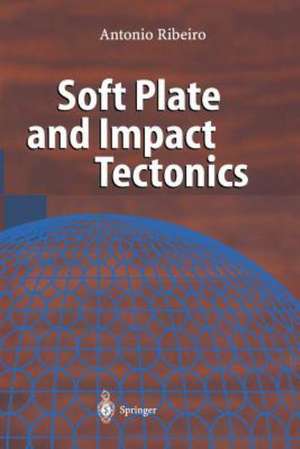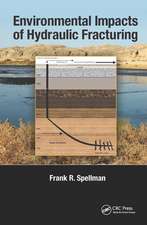Soft Plate and Impact Tectonics
Contribuţii de A. Mateus Autor Antonio Ribeiroen Limba Engleză Paperback – 22 oct 2012
| Toate formatele și edițiile | Preț | Express |
|---|---|---|
| Paperback (1) | 642.51 lei 6-8 săpt. | |
| Springer Berlin, Heidelberg – 22 oct 2012 | 642.51 lei 6-8 săpt. | |
| Hardback (1) | 651.99 lei 6-8 săpt. | |
| Springer Berlin, Heidelberg – 23 apr 2002 | 651.99 lei 6-8 săpt. |
Preț: 642.51 lei
Preț vechi: 755.88 lei
-15% Nou
Puncte Express: 964
Preț estimativ în valută:
122.96€ • 133.52$ • 103.29£
122.96€ • 133.52$ • 103.29£
Carte tipărită la comandă
Livrare economică 22 aprilie-06 mai
Preluare comenzi: 021 569.72.76
Specificații
ISBN-13: 9783642632358
ISBN-10: 3642632351
Pagini: 340
Ilustrații: XII, 324 p.
Dimensiuni: 155 x 235 x 18 mm
Greutate: 0.48 kg
Ediția:Softcover reprint of the original 1st ed. 2002
Editura: Springer Berlin, Heidelberg
Colecția Springer
Locul publicării:Berlin, Heidelberg, Germany
ISBN-10: 3642632351
Pagini: 340
Ilustrații: XII, 324 p.
Dimensiuni: 155 x 235 x 18 mm
Greutate: 0.48 kg
Ediția:Softcover reprint of the original 1st ed. 2002
Editura: Springer Berlin, Heidelberg
Colecția Springer
Locul publicării:Berlin, Heidelberg, Germany
Public țintă
ResearchDescriere
"Structural geology is a core component of knowledge needed for intelligent living with our planet, truly sustainable development." It gives me great pleasure to write this brief foreword for the work by Antonio of Lisboa. When we consider the foundations of our life support systems, cli Ribeiro mate, the biosphere, soil, materials, energy, waste management and today in the word of cities, structural stability, we require exact knowledge of the structure of our planet and change in these structures. Homo sapiens has lived on our planet for a very short period. Our planet is cooling by conduction and convection and it is the structures that result from these processes that control the global climate, our resource base and even soil quality and food secu rity, etc, etc. As the title of this book suggests, some processes are slow and some fast. I was born on a farm in Southern New Zealand, quite close to the magnificent had a profound influen Southern Alps. I often think that watching that environment ce on my mental development.
Cuprins
1 Introduction.- 1.1 From Continental Drift to Rigid Plate Tectonics (1910-1968).- 1.2 Soft Plate Tectonics (1987-1996).- 1.3 Beyond Plate Tectonics (1980-?).- 2 Global Tectonics with Rigid Plates: Foundations and Limitations.- 2.1 Plate Tectonics in Oceans and Continents.- 2.2 Plate Rigidity as a Postulate.- 2.3 Effects of Fluids on Deformation and Its Implications for Composition and Rheology of Lithosphere.- 2.4 Strain and Strain Rates in the Lithosphere: Present and Past.- 2.5 Stress in the Lithosphere: Present and Past.- 2.6 Distributed Deformation in the Lithosphere.- 2.7 Kinematics, Strain and Rheology in Plate Boundaries and Deformed Plate Interiors.- 3 Global Tectonics with Deformable Plates.- 3.1 Introduction.- 3.2 Boudinage of Oceanic Lithosphere: Incremental Aseismic Strain.- 3.3 Homogeneous Shortening of Oceanic Lithosphere.- 3.4 Buckling of the Lithosphere.- 3.5 Viscoelastic Rebound.- 3.6 Tectonic Significance of Fractal Dimensions in Seismicity.- 3.7 Finite and Incremental Strain in Discontinuous Deformation Using Scaling Laws for Faulting.- 3.8 Finite Kinematics and Intraplate Strain.- 3.9 Finite Intraplate Strain: Tests and Paths.- 3.10 Conclusion: The Rheology of Oceanic and Continental Lithosphere.- 3.11 Conclusion: The Driving Mechanism.- 3.12 Time-Dependent Mechanical Response of the Oceanic Lithosphere; Strain Partitioning and Deformation Mechanisms.- 4 The Wilson Cycle Revisited.- 4.1 Plate Tectonics as a Dynamic Process.- 4.2 Intraplate Rift Stage.- 4.3 Red Sea Stage.- 4.4 Atlantic Stage.- 4.5 Diffuse Divergent Plate Boundaries: The Azores Triple Junction.- 4.6 Triggering of Subduction.- 4.7 From Passive to Active Margin: West Iberia.- 4.8 Obduction.- 4.9 Pacific Stage.- 4.10 Collision Stage.- 4.11 Intraplate Orogens.- 4.12 Dynamics of the Lithosphere: Inferences from Tectonics.- 4.13 Plate Tectonics Through Time and Space.- 5 The Earth as an Open Dynamic System.- 5.1 Introduction: Impact Tectonics.- 5.2 Tore as an Impact Crater in the Ocean.- 5.3 Tore as a Strain Marker in Mature Oceanic Lithosphere.- 5.4 Impact Tectonomagmatism at Tore.- 5.5 Conclusion.- References.
Recenzii
From the reviews:
"The book challenges one of the core assumptions of Plate Tectonics – that the plates are rigid and don’t undergo deformation. … this book is a valuable contribution to the current debate … . This is an interesting book, about results rather than methods, which is why the author has included such an extensive and valuable reference list. … this book is a rewarding read that could change your outlook. Geoscientists of all flavours will find something of interest in this book … ." (Kevin McCue, The Australian Geologist, Issue 127, 2003)
"A new book with an interesting hypothesis … A fundamental tenet of plate tectonics is incorrect – namely that the plates are rigid. … Overall, I found the book to be very well organized … . The writing is extremely clear. … The best praise I can give Soft Plate and Impact Tectonics is that I enjoyed reading it, learned a lot, and will recommend it to others. … The book will be very useful for graduate students." (Basil Tikoff, EOS – American Geophysical Union, Vol. 83 (50), 2002)
"The book challenges one of the core assumptions of Plate Tectonics – that the plates are rigid and don’t undergo deformation. … this book is a valuable contribution to the current debate … . This is an interesting book, about results rather than methods, which is why the author has included such an extensive and valuable reference list. … this book is a rewarding read that could change your outlook. Geoscientists of all flavours will find something of interest in this book … ." (Kevin McCue, The Australian Geologist, Issue 127, 2003)
"A new book with an interesting hypothesis … A fundamental tenet of plate tectonics is incorrect – namely that the plates are rigid. … Overall, I found the book to be very well organized … . The writing is extremely clear. … The best praise I can give Soft Plate and Impact Tectonics is that I enjoyed reading it, learned a lot, and will recommend it to others. … The book will be very useful for graduate students." (Basil Tikoff, EOS – American Geophysical Union, Vol. 83 (50), 2002)
Textul de pe ultima copertă
The rigid plate kinematics theory explains most of the current geodetic, geophysical and tectonic data on earth but fails to account for some anomalies. Spatial geodetic data has shown that oceanic plate interiors are not rigid because incipient boudinage and homogeneous shortening develop before buckling of the entire lithosphere. Seismicity and faulting show that the oceanic lithosphere can deform at strain rates above stable continental interiors but below plate boundary zones of variable widths. This is due to the weakening effects of fluids during hydrothermal sea floor metamorphism commonly found in oceans. Furthermore, the test of finiate strain and the implications of the Wilson Cycle are discussed. The Earth is a dissipative dynamical system open to external forcing.
Caracteristici
Hot topics in geotectonics
Complete coverage of the topic
Complete coverage of the topic













